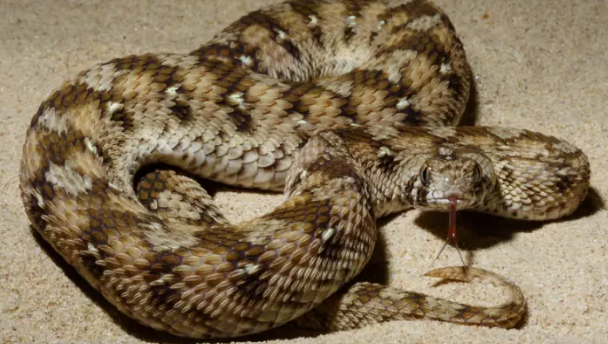Death By Snakebite: Another Neglected Problem of the Poor

Image Coutesy: Devex
A screening of ‘The Dead Don’t Talk’, a documentary highlighting India’s snakebite burden and produced by the Snakebite Healing & Education Society (SHE), was organised on 12 March in Delhi by the Médecins Sans Frontières (MSF) India Access Campaign along with SHE.
Although there exist no official data of the number of deaths caused by snakebites, various estimates show that approximately around 50,000 people die of snakebites every year. This non negligible death causing factor in the country is neglected as it is not listed as one of the ‘neglected diseases’ in the country. As said in the documentary, India is considered to be the global capital of deaths caused by snake bite. The World Health Organisation (WHO) has finally recognised it as a neglected tropical disease only in 2017, after dropping it as one in 2013, due to the efforts of various civil societies.
The poorest and the marginalized in the affected regions are the ones who bear the brunt of morbidity and mortality due to snakebites.
The film opens with the story of the death of an eight-year-old girl, Shrabani living in Lohapur, Radha Nagar, West Bengal.
While asleep alongside her mother, Shrabani was bitten by a snake in the night. Her condition worsened as even after the child woke her mother up, having been unaware of what had happened, the mother tried to pacify her and after her condition deteriorated, Shrabani was rushed to a nearby health centre where she died.
As the documentary shows, there are many such stories in the country, especially in the rural and the poor urban parts of the country.
This means that any intervention regarding snakebites needs to focus on strengthening the primary healthcare structures and as the People’s Health Movement (PHM) observes, “capacity building of health workers, at all levels of care and importantly at the primary level” needs to be focussed on.
Shrabani, taken late to the health centre as she was, was straightaway administered saline and oxygen. As the documentary says, neither Shrabani’s parents nor the snake are to be blamed, but the lack of an infrastructure for a collective effort to deal with snakebite.
People rush to local ‘faith healers’ for snake bites and these healers administer unscientific procedure by chanting mantras and beating the area of the bite with neem leaves. As Priyanka Kadam from SHE explains, this is one of the reasons for the high death rates, but the main reason is the ill-equipped health system. She also said it was always difficult to convince people — who usually would speak of success stories of these faith healers — to not embrace such unscientific ways and to consult the doctors instead.
Explaining the reason for these success stories, Kadam explained that there are two kinds of snakebites — wet bite and dry bite. The former is when the snake bite has induced the venom into the body of the person and the latter is when the venom has not entered the body.
She says, “Fifty per cent of the time it is the dry bite and, in this case, the methods adopted under traditional faith-based healing might or might work, but we try and explain to the healers to refer the victims to the doctor in case of a wet bite.”
It is redundant to say it is only superstition that takes people to faith healers, as said above, what is the other available option?
As the late Dr Amit Sengupta of the PHM, talking about medical myths in the country, has written, “Almost everybody has a theory on health and very often commonly held beliefs that underline such theories are irrational and unscientific. People will, however, cling to their pet beliefs with the argument that they know something works (or doesn’t work) from personal experience.”
Also Read: How Medical Myths are Propagated
“Beliefs and practices are socially constructed and change over time as material conditions change,” Dr Sengupta writes.
The history of snake bites being neglected in the public health system has not managed to wean people off these faith healers.
The Face of the Public Health System
The documentary shows an anti-venom ward inside a government hospital at Dharampur in Gujarat. As the team was at the ward, it saw the ward overflowing. Administration of anti-venom — which is a concussion of venom of Spectacled Cobra, Russell’s Viper, Common Krait and the saw scaled viper — is the only way to cure a snakebite. Since the medical professionals and doctors in the country aren’t trained in handling the snakebite cases and the shortages of this only known lifesaver in public hospitals are the main reasons for the deaths by snakebite.
JP Nadda, India’s Minister of Health and Family Welfare, told the parliament in March 2016, that there had been 3,252 deaths in three years (2013-2015) across India due to snakebites. Of these, 483 deaths had been reported from West Bengal alone. So it is not that the current government (or for that matter, the previous governments) is not informed about the issue.
Instead, it is crucial to note that this government, which has been claiming a remarkable performance in health sector, has neglected the public health system in the country.
The decreasing public expenditure on health demonstrates this. As Newsclick reported about the low public expenditure on health, “the actual allocation for health for the year 2018-2019 is Rs. 54,600 crore. This would amount to 0.29 percent of the GDP, down from 0.32 percent of the GDP during the previous year.”
Also Read: "Ayushman Bharat Scheme Won’t Cure the Ailing Public Health Sector in India"
The Modi government, which has been boasting about the largest health insurance scheme, has also reduced its allocation for the National Rural Health Mission. “It has been cut from Rs. 25,458.61 crore to Rs. 24,279.61 crore, with the total outlay for the National Health Mission being reduced from Rs. 30,801.56 crore to Rs. 30,129.61 crore.”
Speaking to Newsclick, Dr Ashwani Ranjan (a community medicine doctor previously with AIIMS, Delhi) said, “It is only through government intervention that the problem of snakebites can be handled; but as we know the governments and also doctors have been neglecting this issue.”
“The reason for this is, the government and 78 per cent of doctors live in cities. Snakebite is a problem of the rural, poor and tribal people. Thus, these people living in the cities argue that it is not an important problem.”
Ranjan recollects that while he was working in the villages of Haryana, “I used to see at least 8 cases of snakebites every month. We weren’t short of anti-venom in Haryana, but this is not the case in many states. In some places if stockouts are a problem, in some it is the expired anti-venom that is a problem.”
As Ranjan further explained, and as Kadam had discussed following the screening of the film, the government should ensure the availability of anti-venoms in government hospitals, and this is the only way the problem of snakebite can be handled.
The question is, would the governments and medical officers that are pushing the health sector into private hands stop neglecting this “problem of the poor”?
Also Read: Union Budget 2018-19: Con Job for Health, Cutbacks for Education, Contractionary Thrust for Economy
Get the latest reports & analysis with people's perspective on Protests, movements & deep analytical videos, discussions of the current affairs in your Telegram app. Subscribe to NewsClick's Telegram channel & get Real-Time updates on stories, as they get published on our website.
























